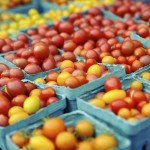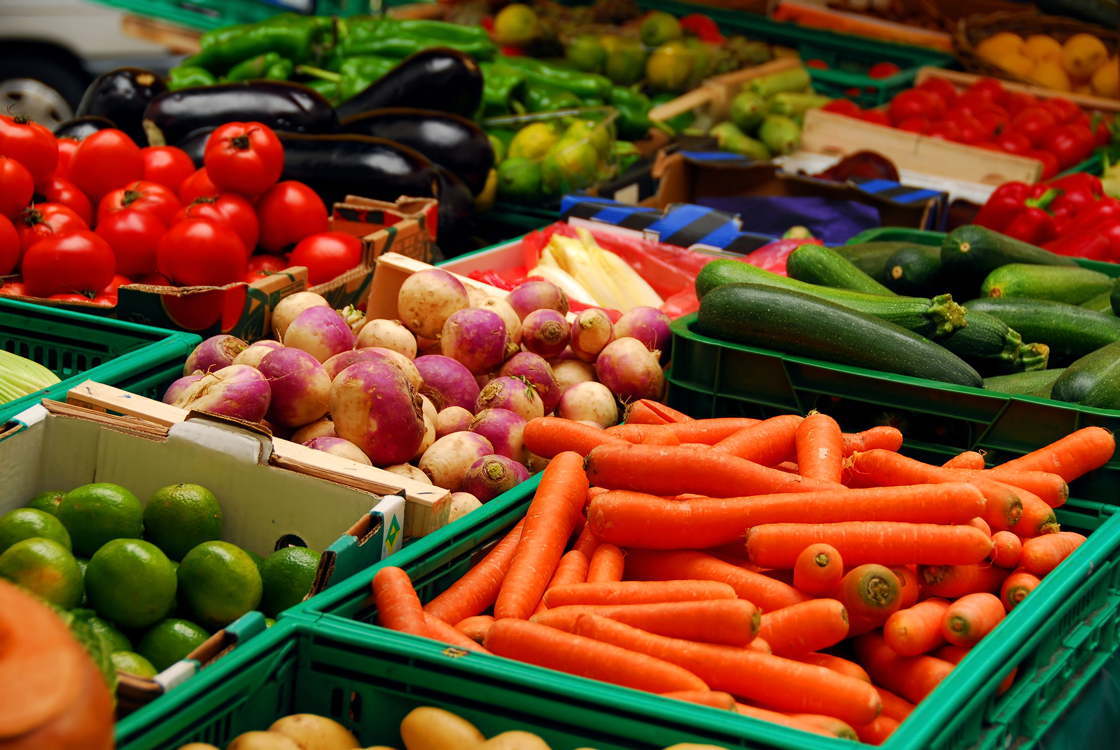Not long ago, I was dismayed to discover that the organic frozen vegetables sold in the large supermarkets were actually products of China. It says so right on the package! It concerned me because while many of us have made a commitment to supporting organic agriculture, it’s not always the most environmentally-sound choice. Why not?
Food travels an average of 2,400 kilometers from farm to table. This includes ‘certified organic’ foods, and in terms of transportation,  these are just as fossil-fuel dependent. I was surprised to learn in Brian Halweil’s book, Eat Here, that even before it arrives in a supermarket, lettuce may be shipped up to 500 miles away from its harvest site as part of the mainstream large-scale inspection and distribution systems before it arrives at the store, just 25 kilometers from where it was grown! The inefficiencies of the modern food chain truly can be ridiculous.
these are just as fossil-fuel dependent. I was surprised to learn in Brian Halweil’s book, Eat Here, that even before it arrives in a supermarket, lettuce may be shipped up to 500 miles away from its harvest site as part of the mainstream large-scale inspection and distribution systems before it arrives at the store, just 25 kilometers from where it was grown! The inefficiencies of the modern food chain truly can be ridiculous.
Even ‘certified organic’ foods from California are resource-intensive. Consider the water that must be piped in from other states, the packaging designed to prevent damage during shipping, and the fuel required to transport them to eastern North America. Most organic foods sold in major chain supermarkets are trucked for days before arriving at a distribution warehouse, where they are inspected and prepared for delivery to various retailers. So by the time you purchase it, the tomatoes could be weeks old, with little nutritional value left.
If you are interested in a way of eating that better ensures nutritional value, supports your local economy and reduces greenhouse gas emissions, you can become a locavore. A what? You may ask. A locavore is one whose diet is based on the food harvested within a 100-mile radius from one’s home. The 100-mile-diet trend is growing quickly due to the internet blogs of other locavores and locavore-based groups. Clearly, the popularity of this diet has a multitude of cascading social, economic, environmental and health benefits.
Here are a few more reasons:
1. Food is fresher. It looks better, and tastes better, but it typically also contains more vitamins than long-distance food. Buy one locally  produced tomato (for example, SunTech brand tomatoes from the Ottawa Valley) vs. a Californian or Mexican tomato. Compare for yourself!
produced tomato (for example, SunTech brand tomatoes from the Ottawa Valley) vs. a Californian or Mexican tomato. Compare for yourself!
2. Food is safer. Less handling means less opportunity for the spread of infectious organisms, like e.coli. (You do not want to know how many people have handled the long-distance fruits and vegetables. The extra steps in the long-distance food chain add many hands to the number! Consider the lax environmental laws in foreign countries like China compared to Canada).
3. The origins of the food is not a mystery. Show up at a local organic farmer’s market on a Saturday morning and you can talk to the people who farmed the food, ask them questions about growing methods, the treatment of livestock and their philosophy and get to know them as people. In comparison, Maple Leaf and Schneider’s products, for example, are what we call ‘anonymous’ foods.
4. Buying locally produced food means lower greenhouse emissions. Whether it’s a large scale monoculture (i.e., single-crop) farm, or a smaller polyculture with mixed crops, if locally produced, there is the tremendous benefit of preserving and extending non-renewable natural resources.
So, whether you buy organically grown foods or not, and whether you are an environmentalist, a health nut or a proponent of supporting the local economy, buying locally produced food is an attractive way to feel good about your food choices.
Have you purchased from a farmer’s market this season? What did you buy?
Click here for tips on how to eat locally in Ottawa.
Click here for info on Ottawa’s Farmer’s Markets.
Enjoy the wonderful selection of health-giving foods the Ottawa Valley has to offer!
